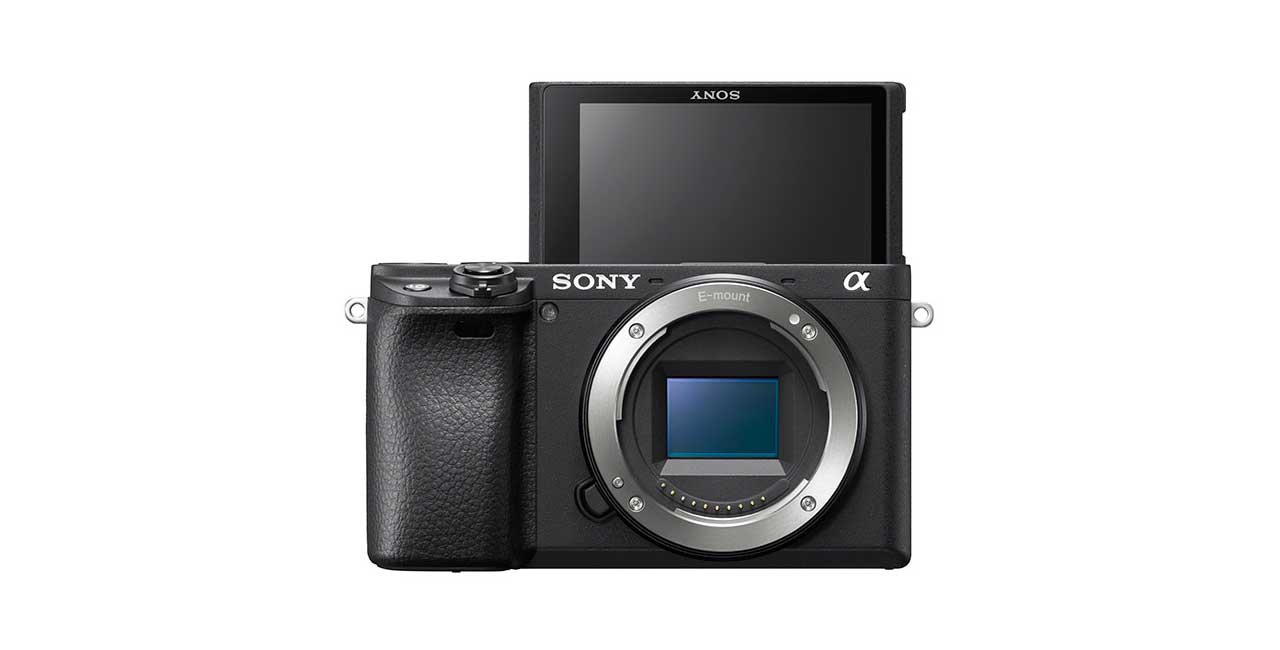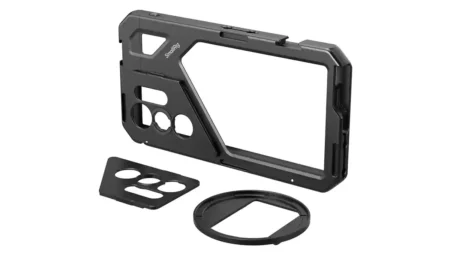Sony has announced a new APS-C-format camera to its Alpha line, introducing the Sony A6400 – price tag £950 / €1,050 with a release date set for February 2019 – and a host of advanced features.
Announced via a livestream, the Sony A6400 boasts a newly designed 24.2-megapixel sensor and the capability to record 4K video with full pixel readout and no pixel binning, at 30 frames per second.
The A6400 also features a new 3-inch, 921k-dot, 180-degree tiltable LCD touchscreen, which should broaden its appeal to the vlogging market. You can also record time-lapse videos with the Sony A6400 using its built-in intervalometer.
Sony is also promising the world’s fastest AF acquisition speed in the A6400 at just 0.02 seconds, while the new Sony camera’s 425 phase detection and contrast detection AF points cover roughly 85% of the frame.
A new Real-time Eye AF is an update to Sony’s original Eye AF technology and is available in all AF modes. The Sony A6400 will automatically detect the eyes of your subjects when you half-press the shutter, and you can select the right or left eye.
Also debuting in the A6400 is Sony’s new Real-time Tracking mode, which employs AI technology based on object recognition and processes colour, depth, pattern and other spatial information to ensure proper focus.
Action photographers get a burst mode of 11fps when using the mechanical shutter or 8fps in silent shooting mode with continuous AF/AE tracking.
Sony A6400 Price & Release Date
The Sony A6400 price tag is £950 / €1,050 for the body only, but will be also offered as a kit with the SELP1650 lens, price at £1,000 / €1,150. A second Sony A6400 kit with the SEL18-135 lens will be priced at £1,300 / €1,450.
We’ll update with Sony A6400 price tags for the US as soon as they become available.
Sony’s original press release:
Sony announces its next Generation α6400 Mirrorless Camera with Real-time Eye Autofocus, Real-time Tracking and World’s Fastest Autofocus
New APS-C mirrorless camera features excellent image quality, compact design and many advanced technologies from Sony’s full-frame line-up
World’s Fastest[i] 0.02 seconds[ii] AF acquisition speed plus 425 phase-detection and contrast-detection AF points covering approximately 84% of image area
Advanced Real-time Eye AF
New Real-time Tracking for object tracking
24.2MP[iii] APS-C Exmor™ CMOS image sensor and latest-generation BIONZ X™ image processor
180-degree fully tiltable LCD touch screen for self-recording
High-speed continuous shooting at up to 11 fps[iv] mechanical shutter / 8 fps[v] silent shooting with continuous AF/AE tracking
High-resolution 4K[vi] movie recording with full pixel readout and no pixel binning, plus advanced AF speed and stability
Interval recording for time-lapse videosSony today introduced an exciting new addition to its E-mount mirrorless camera line-up, the α6400 (model ILCE-6400).
The α6400 brings many of Sony’s most advanced technologies from their acclaimed full-frame line-up to a compact, lightweight APS-C camera. The speedy new camera boasts the world’s fastesti AF acquisition of 0.02iiseconds, while also introducing the new advanced ‘Real-time Eye AF’ and ‘Real-time Tracking’ capabilities. Also included is high speed shooting at up to 11 fpsiv with AF/AE tracking, a new-generation BIONZ X image processing engine that produces excellent image quality, 4Kvi video recording, a 180-degree fully tiltable LCD touch screen and much more, making it the ultimate tool for all types of creators ranging from professionals to everyday vloggers.
Speedy Performance that Captures Decisive Moments
The impressive autofocus system on the new α6400 inherits many technologies from Sony’s newest line-up of full-frame cameras including the α9, α7R III and α7 III models. The new camera features 425 phase-detection AF points and 425 contrast-detection AF points that are placed densely over the entire image area, covering approximately 84% of the image area. This high-speed, high-performance-tracking AF system is paired with a new-generation BIONZ X image processing engine that together allows the camera to acquire focus in as little as 0.02 secondsii and maintain subject lock extremely effectively, ensuring even the fastest moving subjects can be tracked and captured with ease.
The α6400 introduces an advanced ‘Real-time Eye AF’, the latest version of Sony’s acclaimed Eye AF technology. This exciting new capability employs artificial intelligence-based object recognition to detect and process eye data in real time, resulting in improved accuracy, speed and tracking performance of Eye AF. In all autofocus modes, the camera now automatically detects the eyes of the subject and activates Eye AF with a half press of the shutter button, and when in AF-C or AF-A mode, the preferred eye (left or right) of your subject can be selected as the focus point. Choices include Auto / Right Eye / Left Eye, and a Switch Right / Left Eye function can be assigned to a custom function as well. This exciting new technology completely frees the photographer to focus solely on composition with full trust that focus will be tack sharp on the subject’s eye. Eye AF support for animals[vii] will be added in Summer 2019 via a system software update, ideal for wildlife photographers.
Also debuting on the α6400 is Sony’s newly developed ‘Real-time Tracking’. This mode utilises Sony’s latest algorithm including Artificial Intelligence based object recognition and processes colour, subject distance (depth), pattern (brightness) as spatial information to ensure that all subjects can be captured with excellent accuracy. Plus, when photographing or videoing humans or animals, face and eye position information is recognised by AI and the subjects’ eyevii is monitored in real time with extremely high tracking precision. This can be activated by a simple half press of the shutter button[viii], or can be assigned to a custom function as well.
In terms of overall shooting speeds, the new camera can shoot at up to 11 fpsiv with full AF/AE tracking while utilising the mechanical shutter, and up to 8 fpsv with full AF/AE tracking while silent shooting. It can shoot at each of these speeds for up to 116 frames JPEG Standard / 46 frames RAW compressed, greatly increasing the chances of capturing the perfect moment.
All-around Advancements in Image Quality
Sony’s new α6400 is equipped with a 24.2 MPiii APS-C sized image sensor that is paired with an upgraded BIONZ X processor to deliver incredible advancements in image quality and colour reproduction in all types of shooting conditions. Standard ISO ranges up to ISO 32000 for both still and movie and is expandable up to ISO 102400 for still images, with excellent noise reduction at medium and high sensitivities.
The camera also inherits many of the image processing algorithms from Sony’s newest full-frame cameras, greatly suppressing noise while preserving resolution and improving texture depiction.
Advanced High-Resolution 4Kvi Movie Recording with Fast Hybrid Autofocus
The versatile α6400 is an exceptional video camera, offering internal 4K (QFHD: 3840 x 2160) movie recording with full pixel readout and no pixel binning to collect about 2.4x the amount of data required for 4K movies, and then oversamples it to produce high quality 4K footage with exceptional detail and depth. Focusing during movie shooting is fast and stable thanks to upgraded Fast Hybrid AF technology, which keeps the subject in constant smooth focus no matter the scene, and even if an object crosses in front. This advanced AF plus touch focus functionality make it an ideal camera choice for many vloggers and video creators that are regularly creating and uploading content online.
For time-lapse movie creation[ix], the new camera features built-in interval recording that can be set anywhere between 1 and 60 seconds, with a total number of shots from 1 to 9999. AE tracking sensitivity can be adjusted to “High”, “Mid” or “Low” during interval shooting, allowing for reduced changes in exposure over the shooting interval.
Additionally, for the first time in a Sony APS-C mirrorless camera, the new model includes an HLG (Hybrid Log-Gamma) picture profile, which supports an Instant HDR workflow, allowing HDR (HLG) compatible TV’s to playback beautiful, true-to-life 4K HDR[x] imagery. Furthermore, both S-Log2 and S-Log3[xi] are available for increased colour grading flexibility, as well as Zebra functionality, Gamma Display assist and proxy recording. The camera can also record Full HD at 120 fps[xii] at up to 100 Mbps, allowing footage to be reviewed and eventually edited into 4x or 5x slow-motion video files in Full HD resolution with AF tracking.
Upgraded Build to Maximise Versatility
The new camera is designed to offer a high level of functionality and customisation to maximise shooting freedom. New on the α6400 is a 180-degree, fully tiltable, 3.0-type LCD flip screen with 921k-dots of resolution that allows for simple and effective framing of selfie-style shooting for both still and video capture. Utilising this capability, vloggers will be able to check and monitor composition throughout their entire creative process. The LCD screen is also equipped with touch functionality, with options for Touch Pad, Touch Focus, Touch Shutter and new Touch Tracking which quickly activates ‘Real-time Tracking’ through the touch screen.
The camera features a high quality XGA OLED Tru-finder™ viewfinder, extensive customisation with 89 functions that are assignable to 8 custom keys, the new My Dial and My Menu functionality, enhanced overall menu usability, a help screen for menus, star rating for images, and many other features that allow for a seamless shooting experience. It is also built with a tough magnesium alloy design, is dust and moisture resistant[xiii] and has an extremely durable shutter that is rated for approximately 200,000 cycles[xiv]. It is also capable of seamlessly transferring files to a smartphone or tablet when connected to the brand-new ‘Imaging Edge Mobile’ application[xv].
Pricing and Availability
The α6400 will ship in Europe in February 2019 priced at approximately £950. It will also be offered as a kit with the SELP1650 lens priced at approximately £1,000 or in a kit with the SEL18135 lens priced at approximately £1,300.
For full product details, please visit https://www.sony.co.uk/electronics/interchangeable-lens-cameras/ilce-6400
A variety of exclusive stories, videos and exciting new content shot with the newest cameras and other Sony α products can be found at https://www.sony.co.uk/alphauniverse. Sony’s European photography hub is available in 22 languages and details product news, competitions and an up-to-date list of Sony events in each country.
[i] Among interchangeable-lens digital cameras equipped with an APS-C image sensor as of January 2019, based on Sony research
[ii] CIPA-compliant, internal measurement method with an E 18-135mm F3.5-5.6 OSS lens mounted, Pre-AF off and viewfinder in use
[iii] Approximate effective megapixels
[iv] In “Hi+” continuous shooting mode. Maximum fps will depend on camera settings
[v] Maximum fps will depend on camera settings. Some distortion may occur with fast-moving subjects or if the camera is moved sideways rapidly while shooting
[vi] A Class 10 or higher SDHC/SDXC card is required for XAVC S format movie recording. UHS speed Class 3 or higher is required for 100Mbps recording
[vii] Accurate focus may not be achieved with certain subjects in certain situations
[viii] “Tracking” must be enabled via the menu beforehand
[ix] The latest version of Imaging Edge “Viewer” and PlayMemories Home desktop applications is required
[x] Connect this product to an HDR (HLG) compatible Sony TV via USB cable when displaying HDR (HLG) movies
[xi] S-Log2 and S-Log3 are premised on processing pictures
[xii] Pixels to be read are limited to the sensor area that is required for Full HD movies
[xiii] Not guaranteed to be 100% dust and moisture proof
[xiv] Sony internal tests with electronic front curtain shutter
[xv] Availability of transfer / playback depends on the performance of the smartphone and tablet



